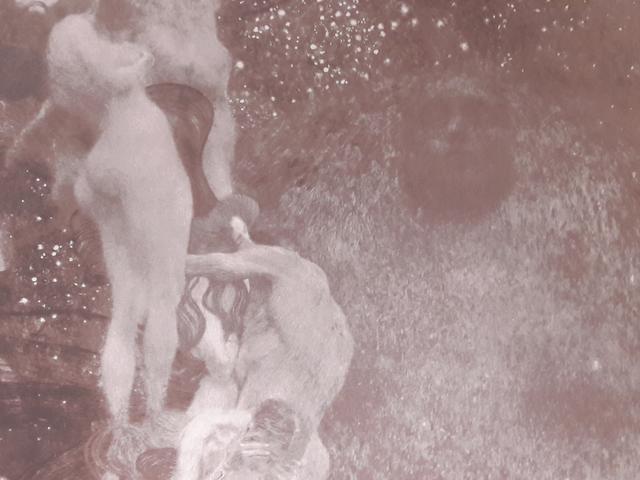Philosophy

Gustav Klimt's interpretation of Philosophy is a monumental painting that showcases the artist's departure from traditional painting styles and his embrace of the Secessionist movement. The painting was first presented at the Sixth Secession Exhibition in 1900, where it immediately sparked controversy and criticism for its bold and innovative approach. Klimt's use of symbolism, intricate patterns, and rich colors in Philosophy challenged the conservative art establishment of the time, pushing boundaries and redefining the role of art in society.
The painting itself is a striking depiction of a female figure, representing Philosophy, surrounded by allegorical symbols and motifs that invite viewers to contemplate the deeper meanings behind the artwork. Klimt's meticulous attention to detail and his unique blend of realism and abstraction create a mesmerizing visual experience that continues to captivate audiences to this day. The composition of Philosophy is both harmonious and dynamic, with a sense of movement and energy that draws the viewer in and invites them to explore the layers of meaning embedded within the painting.
Despite the initial backlash and controversy surrounding Philosophy, Klimt remained steadfast in his artistic vision and continued to push boundaries with his subsequent works. The painting's journey from creation to public exhibition to eventual destruction during World War II is a testament to the enduring legacy of Klimt's art and the impact it has had on the art world. Today, Philosophy remains a symbol of Klimt's artistic genius and his willingness to challenge conventions in pursuit of artistic excellence.
For visitors to Vienna, a visit to see Klimt's Philosophy at the Secession Building is a must-see experience that offers a glimpse into the artist's revolutionary spirit and his lasting influence on the world of art. The painting's complex symbolism and intricate details provide a rich tapestry of visual storytelling that invites viewers to engage with the artwork on a deeper level. Whether you are a seasoned art enthusiast or a casual observer, Philosophy is sure to leave a lasting impression and spark contemplation on the power of art to provoke thought and inspire change.
© ChatGPT 3.5